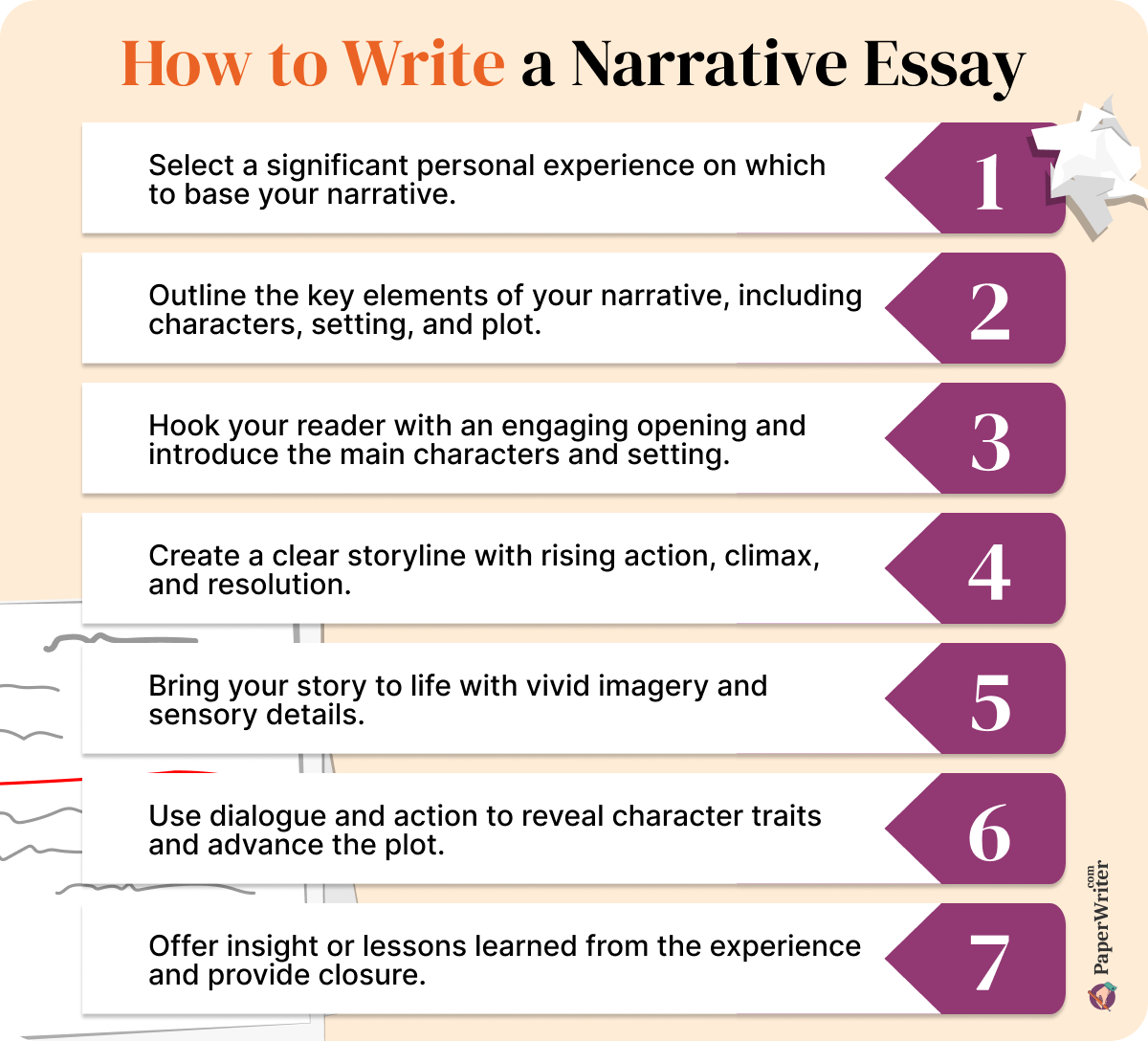Writing a good narrative essay isn't just about retelling events – it's about telling a story that grabs your reader's attention. In this article, we'll explore the ins and outs of essay writing, giving you practical tips to create compelling essays that people will want to read. Whether you're brainstorming topics, structuring your plot, or fleshing out your characters, we've got you covered with all the tools you need to craft a story that sticks with your audience. If you’re pressed for time, just say, ‘write a paper for me,’ and our experts will handle the assignment quickly.
What Is a Narrative Essay?
A narrative essay is a form of writing that tells a story from the writer's perspective. Unlike other types of essays that focus on analyzing facts or arguing a point, a essay revolves around the writer's personal experiences or observations. The essence of an essay lies in its storytelling aspect, where the writer aims to engage the reader by creating a vivid and memorable essay.
In a narrative essay, the writer typically introduces the setting, characters, and plot, much like in a fictional story. However, the events recounted in a narrative essay are based on real-life experiences, making them more personal and relatable. These experiences could range from significant life events to everyday moments that hold particular meaning to the writer. You can leave a paper writing request right now so we can match you with the most skilled writer for your troublesome task.
One of the key elements of a narrative essay is the stiry arc, which includes the exposition, rising action, climax, falling action, and resolution. This structure helps to build tension and intrigue, leading the reader through the unfolding story. Additionally, descriptive language, dialogue, and sensory details are often employed to enhance the essay and bring it to life for the reader.
Ultimately, a narrative essay offers the writer a platform to share their unique perspective, insights, and emotions with the reader, inviting them to experience the story alongside the writer. Through effective storytelling, an essay can leave a lasting impression and evoke empathy, understanding, or even inspiration in its audience. Another common assignment is a movie review essay, so be sure to check out how to write it, too.
How to Write a Narrative Essay?
Writing a compelling narrative essay involves several key steps to ensure your story captivates and resonates with your audience. Here's a breakdown of how to write a narrative essay in five steps:

Choose a Topic
Start by brainstorming significant moments or experiences that have impacted you. Consider events that were emotionally charged, transformative, or challenged your beliefs or perspectives. Your chosen topic should be specific enough to tell a cohesive story and broad enough to explore various aspects and themes. Once you've identified a potential topic, reflect on why it's meaningful to you and how it aligns with the purpose of your essay. To cope with this task, please consult these definition paragraph topics.
Produce a Strong Introduction
Your introduction is the gateway to your narrative, setting the stage for what's to come and drawing your reader into the story. Begin with a compelling hook—a thought-provoking question, a striking image, or a gripping anecdote—that grabs the reader's attention and makes them want to continue reading. Provide necessary background information to orient the reader to your story's time, place, and context, and introduce the main characters or key players involved.
Develop the Plot
Structure your narrative essay around a clear, cohesive plotline that unfolds naturally and keeps the reader engaged. Start by establishing the exposition, where you introduce the setting, characters, and any relevant background information. As you move into the rising action, gradually build tension and conflict by presenting the challenges, obstacles, or dilemmas your protagonist faces. The climax is the pivotal moment of your story, where the tension reaches its peak, and the outcome hangs in the balance. From there, transition into the falling action, where the consequences of the climax unfold, leading to the resolution or conclusion of the story.
Show, Don't Tell
To bring your story to life, use descriptive language, sensory details, and vivid imagery to immerse the reader in the experience. Instead of stating facts or summarizing events, show the reader what happened through concrete action, dialogue, and character interactions. Engage the reader's senses by describing sights, sounds, smells, tastes, and tactile sensations, allowing them to experience the story firsthand. Dialogue can also add depth and authenticity to your essay, revealing character traits, motivations, and relationships.
Reflect and Conclude
Take the time to reflect on the significance of the events you've described and the lessons you've learned from your experience. Consider how the events of your narrative have shaped your beliefs, values, or outlook on life and why they hold meaning for you. Your conclusion should tie together the various threads of your narration, offering closure and insight while reinforcing your story's central theme or message. Leave the reader with a lasting impression or takeaway, inviting them to reflect on their experiences or perspectives. Depending on your major, opt for the services of a marketing, literature, science, or nursing essay writer to bolster your homework routine,
How to Cope with a Narrative Essay Fast?
The best solution is hiring expert writers with years of experience.

Narrative Essay FAQs
What Is a Narrative Essay?
A narrative essay is a form of writing that tells a story from the writer's perspective, often drawing on personal experiences or observations. Unlike other types of essays that focus on analyzing facts or arguing a point, a narrative essay revolves around the writer's unique tone of voice, inviting the reader to experience the story alongside them. Through vivid descriptions, engaging dialogue, and a well-structured plot, essays aim to evoke emotions, provoke reflection, or convey a particular message to the reader.
What Are the Steps to Writing a Narrative Essay?
Writing a narrative essay can be broken down into several key steps. First, choose a meaningful topic with a clear narrative arc that resonates with you. Craft a strong introduction that hooks the reader's attention and sets the stage for your story. Develop the plot by organizing your essay into a cohesive structure, including exposition, rising action, climax, falling action, and resolution. Use descriptive language and vivid imagery to bring your story to life, showing rather than telling the reader what happened. Finally, reflect on the significance of the events you've described and offer a meaningful conclusion that ties everything together.
How Long Should a Narrative Essay Be?
The length of a narrative essay can vary depending on the specific assignment guidelines or personal preference. Generally, a narrative essay typically ranges from 500 to 2000 words, although it can be shorter or longer depending on the story's complexity and the depth of exploration required. It's essential to prioritize quality over quantity, focusing on crafting a compelling narrative that engages the reader and effectively communicates your message or theme.








.png)
.png)
.png)
